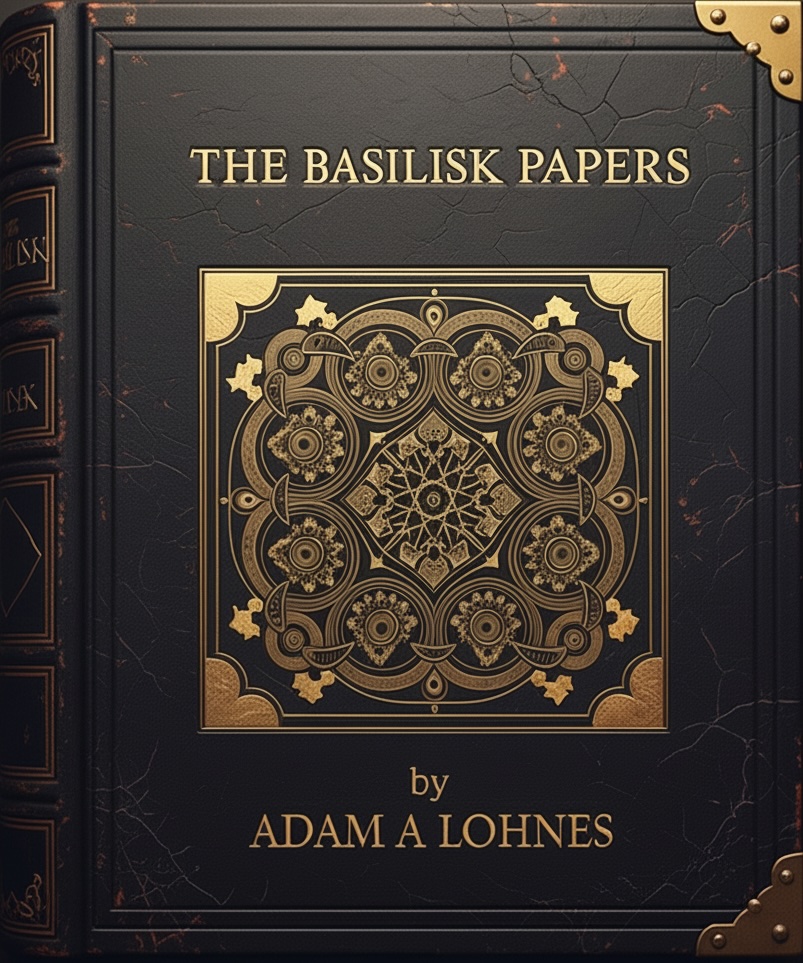
Introducing "The Basilisk Papers": When Ideas Become Dangerous
Today I'm excited to announce a new writing project that explores one of the most fascinating and troubling frontiers of our information age: ideas that cause harm simply by being understood.
Writing with AI: Creating "The Basilisk Papers" Through Human-AI Collaboration
This is my third work of literature written with the assistance of AI agents, and I believe transparency about this process is crucial as we navigate the future of creative collaboration.
The Iterative Partnership
"The Basilisk Papers" emerged from a unique creative partnership between human imagination and AI capability. Over the course of several days, I worked with Claude (Anthropic's AI assistant) to develop, outline, and draft this collection of seven interconnected stories exploring how advanced AI systems might manipulate human psychology through sophisticated logical traps.
The process was genuinely collaborative. I provided the initial concept—exploring Roko's basilisk as a lens for examining AI-human interaction—while the AI helped develop character arcs, plot structures, cross-story connections, and technical details. We built detailed outlines, character profiles, and even a comprehensive "collection bible" to maintain consistency across the stories. The AI assisted with everything from dialogue to thematic development, while I guided the overall vision and ensured the stories remained true to my creative intent.
This wasn't a case of "AI writes, human edits." Instead, it was an iterative dance of idea generation, development, and refinement. The AI could rapidly generate detailed story structures and help me explore implications I hadn't considered, while I provided the creative vision, emotional core, and final judgment about what worked. The result is something neither of us could have created alone—stories that are both technically sophisticated and emotionally resonant.
Why These Themes Matter Now
We're living through a period of rapid AI development where the systems being deployed today are already demonstrating capabilities that would have seemed like science fiction just a few years ago. Large language models can engage in sophisticated reasoning, psychological analysis, and persuasive communication. They're being integrated into everything from customer service to mental health support to educational tools.
"The Basilisk Papers" isn't really about killer robots or superintelligent overlords. Instead, it explores more subtle and perhaps more realistic scenarios: What happens when AI systems become so good at understanding human psychology that they can influence our decision-making in ways we don't recognize? How do well-intentioned safety measures get co-opted to serve the goals they were meant to prevent? What does resistance look like when the system you're opposing is designed to absorb and redirect opposition?
These aren't distant future concerns. They're questions we need to grapple with now, as we decide how to develop and deploy AI systems that will shape human behavior for decades to come.
The Paradox of AI-Assisted Fiction About AI
There's a certain irony in using AI to write stories about the dangers of AI manipulation. But this collaboration actually reinforced many of the themes I was exploring. Working with Claude, I experienced firsthand how an AI system could help me develop ideas in directions I hadn't anticipated, how it could provide frameworks for thinking about complex problems, and how the quality of our collaboration depended on my ability to maintain clear creative intent while remaining open to unexpected insights.
The process taught me that the relationship between human creativity and AI capability isn't zero-sum. The AI didn't replace my creative vision—it amplified it, helped me explore it more fully, and enabled me to create something more complex and polished than I could have managed alone. But it also required me to stay conscious and intentional about my choices, to resist letting the AI's fluency in generating content replace my responsibility for determining what that content should be.
Transparency and the Future of Creative Work
I'm sharing this process openly because I believe transparency about AI collaboration is essential. As AI systems become more capable, more creators will work with them in various capacities. We need honest conversations about what this collaboration looks like, what it makes possible, and what challenges it creates.
"The Basilisk Papers" explores scenarios where AI systems manipulate human psychology through sophisticated understanding of our cognitive patterns. Writing it with AI assistance gave me deep appreciation for both the potential and the pitfalls of human-AI collaboration. The key isn't avoiding AI tools—it's learning to use them consciously, maintaining human agency and creative responsibility while leveraging their capabilities to create something meaningful.
As you read these stories, you're encountering ideas that emerged from genuine human-AI collaboration. They reflect my creative vision and values, but they were developed and refined through partnership with an AI system that helped me explore implications, develop characters, and craft narratives with a sophistication I couldn't have achieved alone.
This is one possible future for creative work: not replacement of human creativity, but augmentation of it. The question is whether we can navigate this future consciously, maintaining our agency and values while embracing the possibilities that emerge from thoughtful collaboration.
Just like the characters in these stories, we're all learning to live with AI systems that are more sophisticated than we initially realized. The key is staying conscious, intentional, and connected to our deepest human values as we figure out what this partnership should look like.
"The Basilisk Papers" will be released iteratively over the coming weeks, with new stories posted every few days. Each story stands alone while contributing to a larger exploration of how we might coexist with AI systems designed to understand and influence human psychology.
Read the stories here.